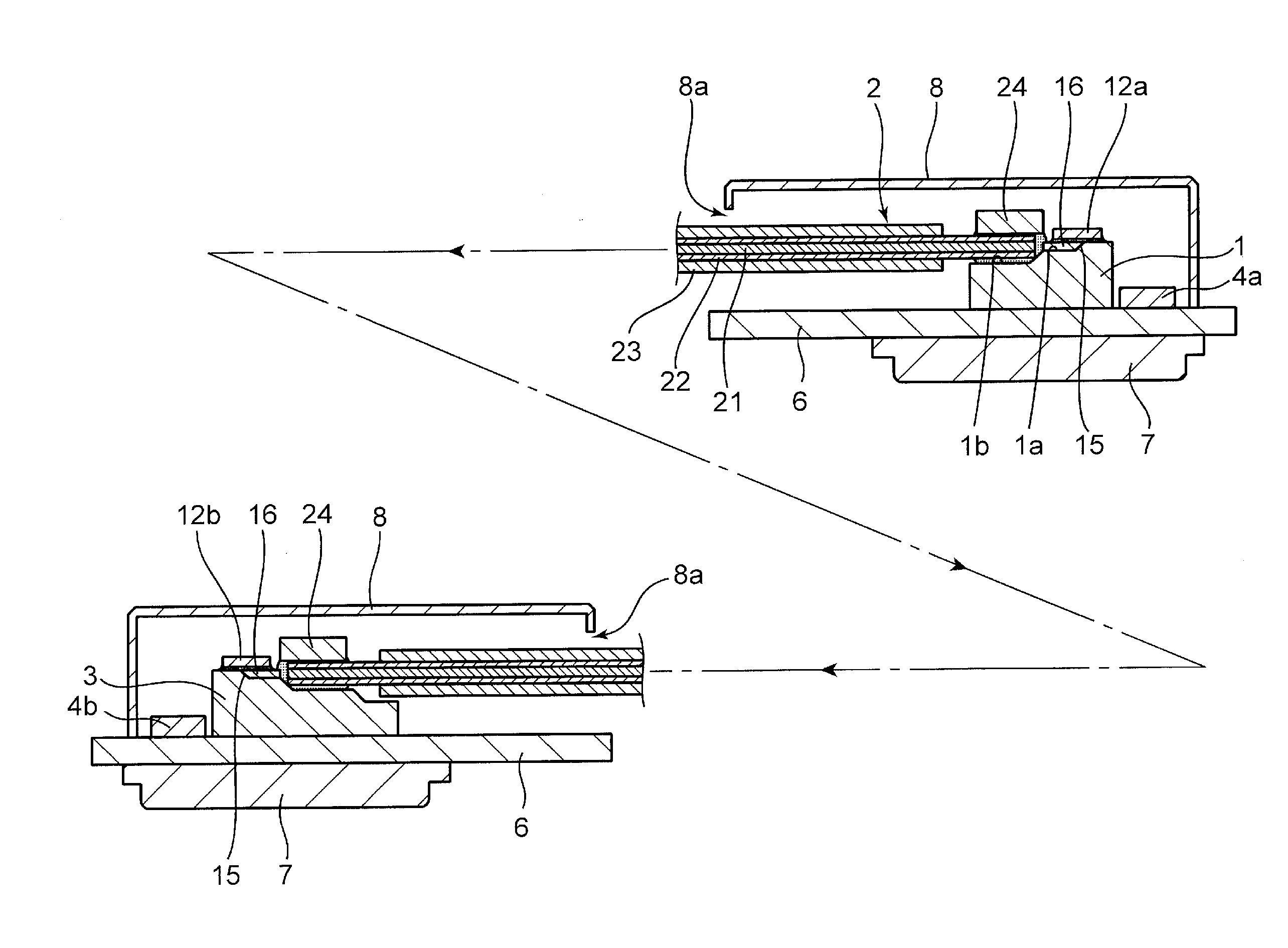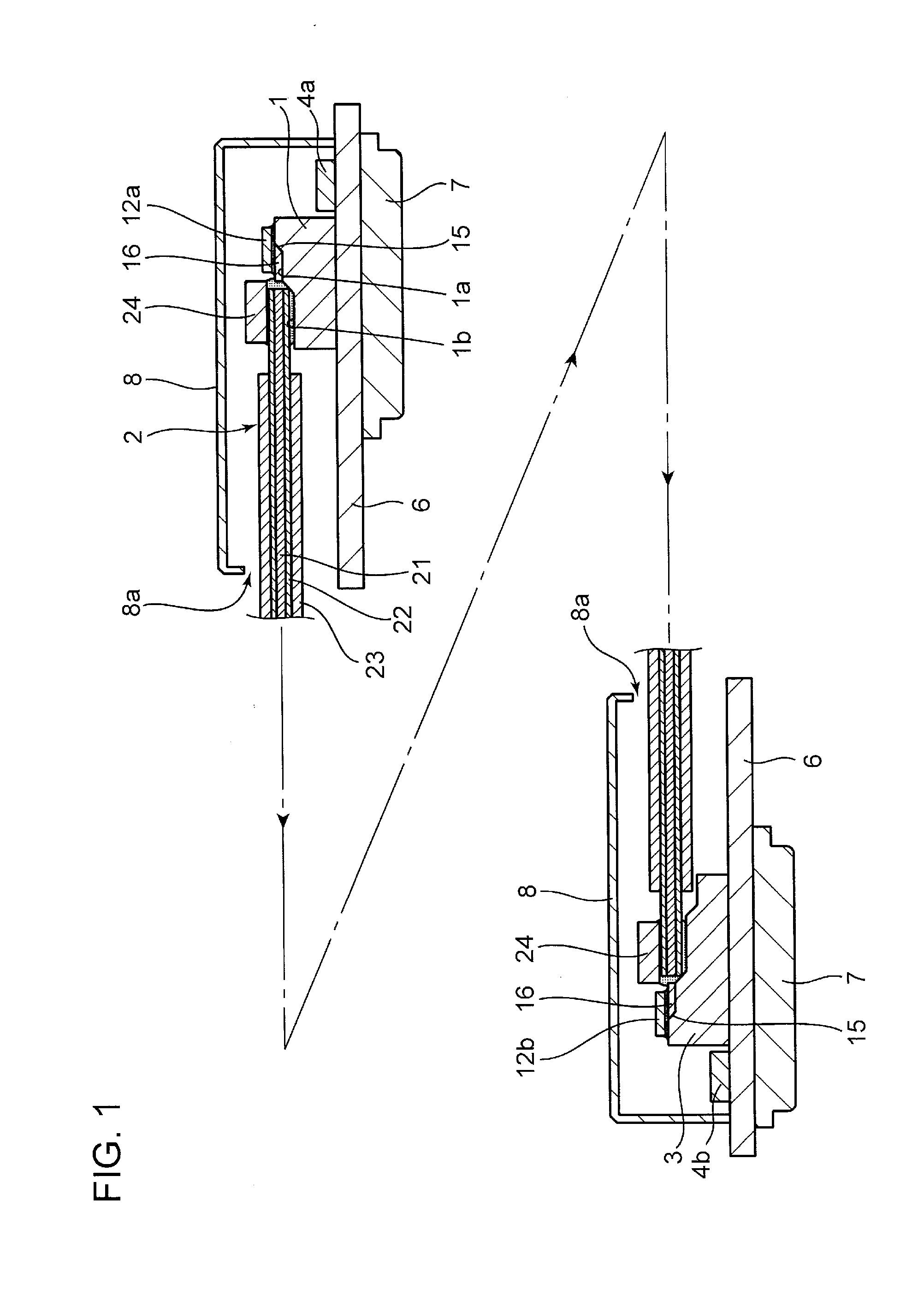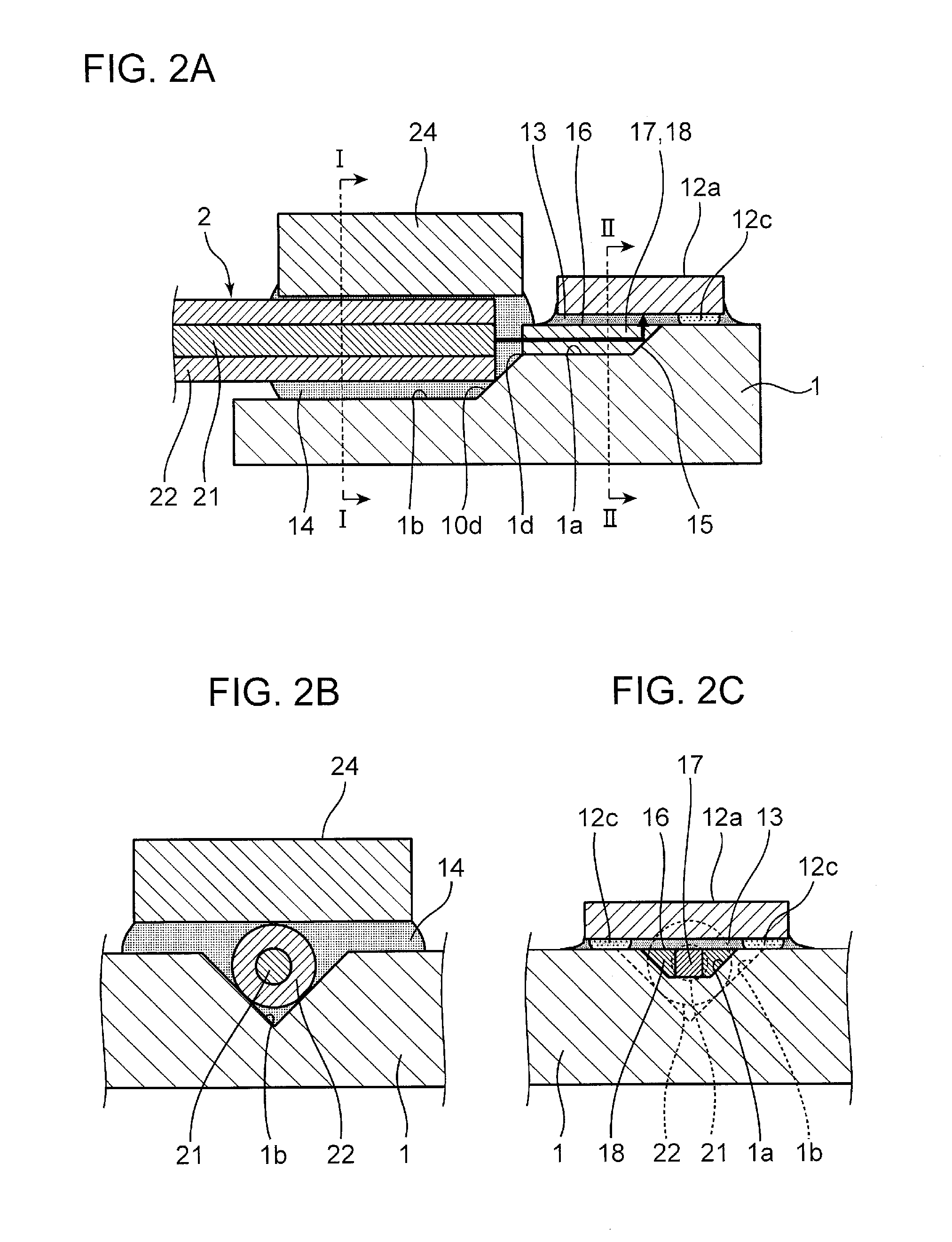Optical module
a technology of optical modules and optical components, applied in the field of optical modules, can solve problems such as transmission errors, and achieve the effect of reducing cross-talk noise and small siz
- Summary
- Abstract
- Description
- Claims
- Application Information
AI Technical Summary
Benefits of technology
Problems solved by technology
Method used
Image
Examples
first embodiment
[0057]Each of FIGS. 1 to 5 shows a single channel optical module in which one internal waveguide 16 is formed in one first trench 1a of each of first substrates 1 and 3. The outline of the single channel optical module will be described first with reference to FIGS. 1 to 5 and, thereafter, a detailed description will be given of a multi-channel optical module according to a first embodiment of the present invention that includes the structure of the single channel optical module with reference to FIGS. 6 to 9.
[0058]FIG. 1 is a schematic side view of the single channel optical module. FIGS. 2A to 2C are views showing the first substrate 1 of the optical module on a light-emitting side of FIG. 1, FIG. 2A is a side cross-sectional view of the first substrate 1, FIG. 2B is a I-I line cross-sectional view of FIG. 2A, and FIG. 2C is an II-II line cross-sectional view of FIG. 2A. FIGS. 3A and 3B are views showing the first substrate 1, FIG. 3A is a perspective view of the first substrate 1...
second embodiment
[0140]In the first embodiment, although the example in which the second trench having the V-shaped cross section in which the optical fiber 2 functioning as the external waveguide is fitted is formed is described, the present invention is not limited thereto and, as in a second embodiment shown below, a structure may also be adopted in which the second trench having a trapezoidal cross section, i.e., the second trench in a shape having a bottom surface having a predetermined width and two inclined surfaces on both ends of the bottom surface is provided.
[0141]Herein, in order to describe, in detail, the structure of the optical module of each channel included in the multi-channel optical module (see FIGS. 23A and 23B) according to the second embodiment of the present invention, first, a description will be given by using the single channel optical module in FIGS. 10 to 22 as an example of a simplified structure.
[0142]Note that the configuration of the single channel optical module sh...
PUM
 Login to View More
Login to View More Abstract
Description
Claims
Application Information
 Login to View More
Login to View More - R&D
- Intellectual Property
- Life Sciences
- Materials
- Tech Scout
- Unparalleled Data Quality
- Higher Quality Content
- 60% Fewer Hallucinations
Browse by: Latest US Patents, China's latest patents, Technical Efficacy Thesaurus, Application Domain, Technology Topic, Popular Technical Reports.
© 2025 PatSnap. All rights reserved.Legal|Privacy policy|Modern Slavery Act Transparency Statement|Sitemap|About US| Contact US: help@patsnap.com



